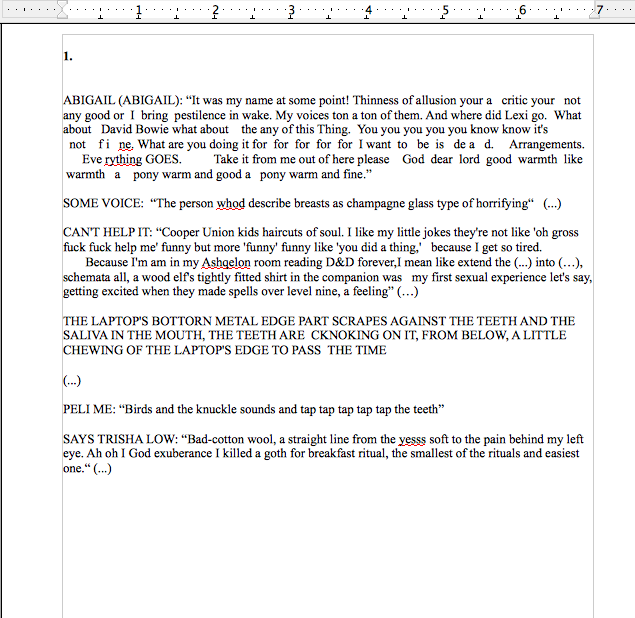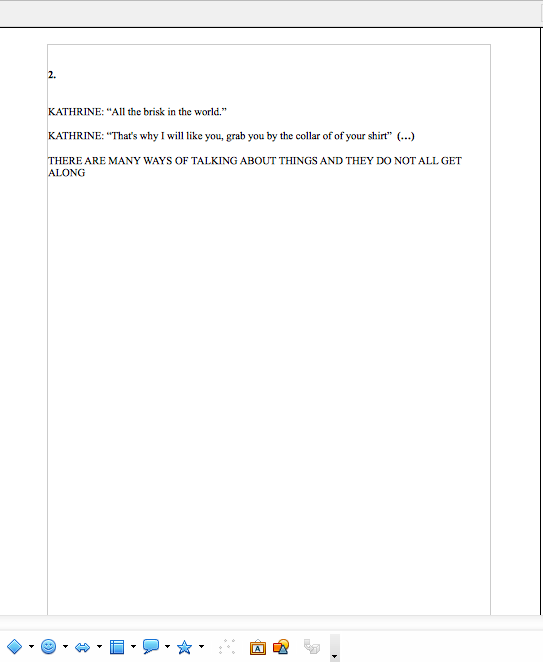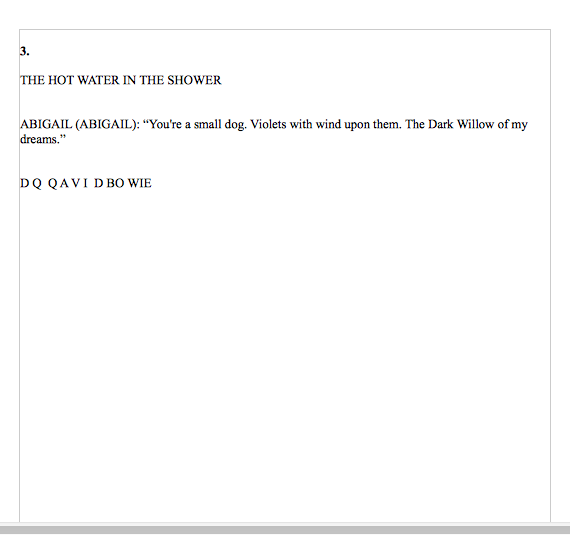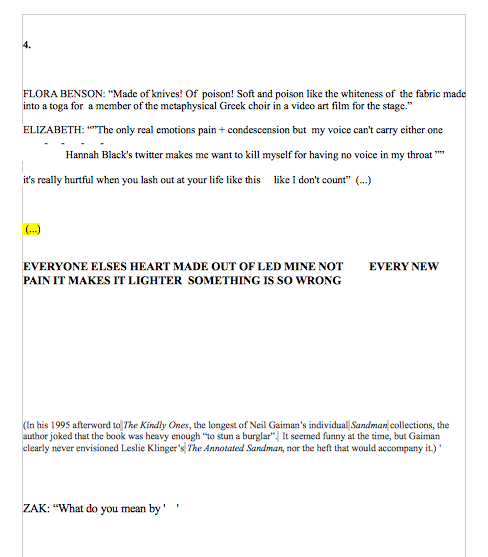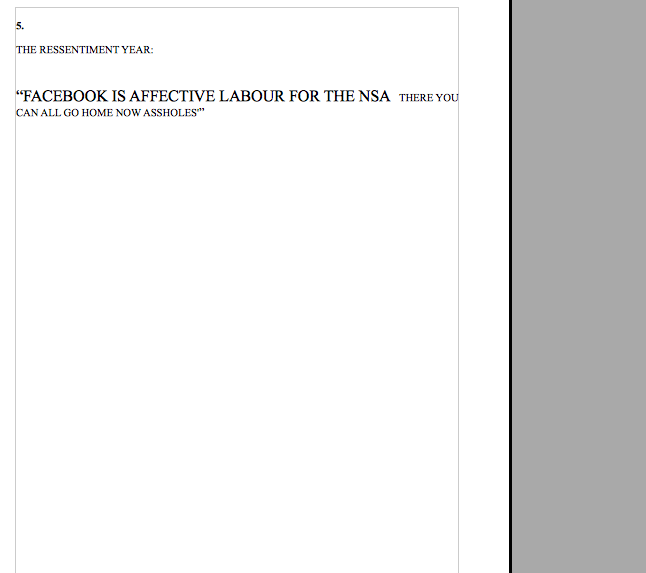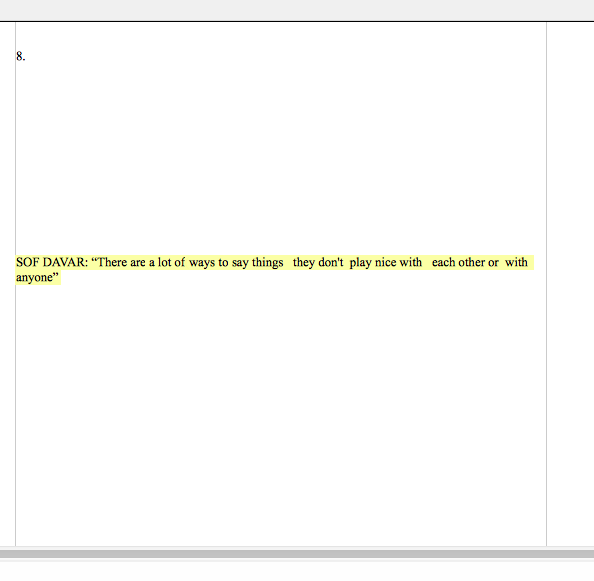‘How Do You Make Sense’: Text for Zak Kitnick’s '1-4’
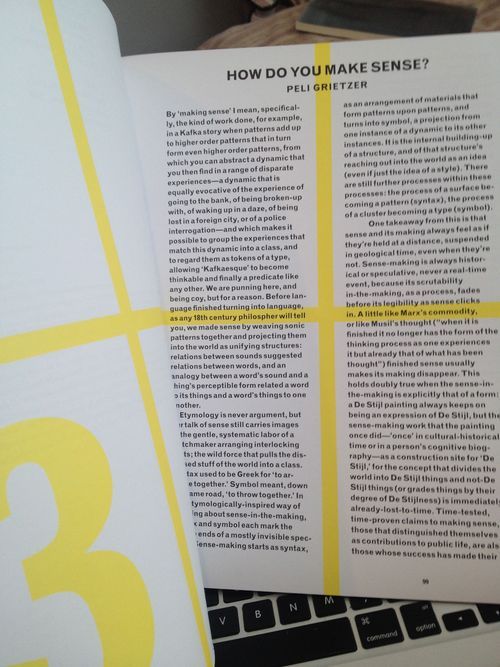
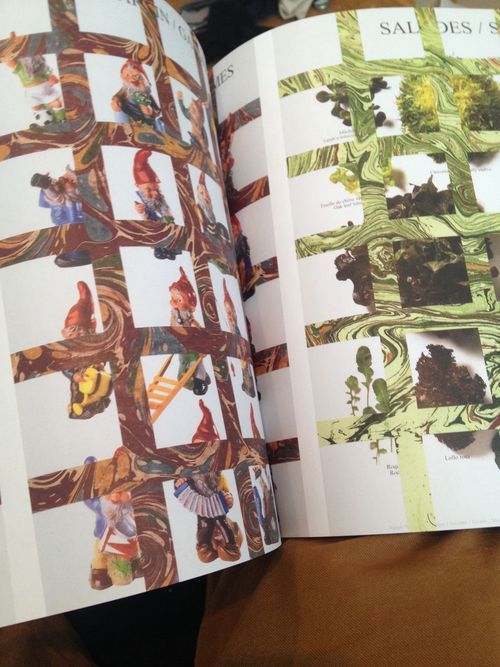
How do you make sense?
By 'making sense’ I mean, specifically, the kind of work canonically done by e.g. a Kafka story when its patterns add up into higher order patterns that in turn form even higher order patterns, from which patterns you abstract a dynamic that you then find in a range of disparate experiences, a dynamic that is equally evocative of the experience of going to the bank, of the experience of being broken-up with, the experience of waking up in a daze, the experience of being lost in a foreign city, or the experience of a police interrogation, and makes it possible to group together the experiences that match this dynamic in a class, regarding them as tokens of a type, allowing 'Kafkaesque’ to become thinkable and finally become a predicate like any other. We are punning here ('make sense’), or being coy, but for a reason. Before language finished turning into language, any 18th century philospher will tell you, we made sense by weaving sonic patterns and projecting them into the world as unifying structures: relations between sounds suggested the relations between words, and an analogy between a word’s sound and a thing’s perceptible form related a word to its things and a word’s things to one another through the word. Even the pun itself is a revival. 'Symbol’ used to be Greek for 'to throw together.’ 'Syntax’ meant, down the same road, 'to arrange together.’ Etimology is never argument, but it’s a place to start: the gentle, systematic labour of a watchmaker arranging interlocking parts, and the wild force that pulls in the dispersed stuff of the world into a class. And on the other side of action, process: the process of a surface becoming a pattern (Syntax), the process of a cluster becoming a type. (Symbol)
One take away from this natural-history parable is that sense and its making are always apart by what feels like geological time, even when they’re not. A little like Marx’s commodity, or like Musil’s thought ('when it is finished it no longer has the form of the thinking process as one experiences it but already that of what has been thought’), finished sense usually makes its making disappear. This holds doubly true when the sense in the making is explicitly that of a form: a De Stijl painting always keeps on being an expression of De Stijl, but the sense-making work the painting once did – 'once’ in cultural-historical time or in a person’s cognitive biography – as a construction site for 'De Stijl,’ for the concept that divides the world into De Stijl things and not-De Stijl things (or grades things by their degree of De Stijl) is immediately already-lost-to-time. Time-tested, time-proved claims to making sense, those that distinguished themselves as a contribution to the public life, are also those whose own success has made inscrutable as processes: we effortlessly call an institution 'Kafkaesque,’ a conversation 'Pinteresque,’ an idea 'Borgesian.’ We effortlessly recognize an abstract expressionist surface, a free jazz composition, a minimalist space. We easily read the sense-makers in each case as examples of the sense, but not so easily as generative models that produce a concept where a concept wasn’t.
Sense-making is always history or speculation, never a real-time event, because its scrutability as making, as a process, fades out faster than its scrutability as sense clicks in. On one etimologically-inspired way to think about syntax and symbol, syntax and symbol mark the two visible ends of this mostly invisible spectrum of sense-in-the-making. Sense-making starts as syntax, as arrangement of materials that forms patterns upon patterns, and turns into symbol, a projection from one instance of a dynamic to its other instances. The internal building-up of structure, and a structure’s reaching out into the world as an idea (even if just the idea of a style). We never see syntax and symbol at the same time – probably a good hint that they’re the same entity in different disguises – but there are edges of cognition where one is already (or still) accessible and the other is still (or already) saliently missing, present as a black box or a trace. There’s the edge where syntax shows up as a gap between our previous vocabulary of types and the new type, and the edge where symbol shows up as the hypothetical horizon of a pattern-building process. (The edge of Stein, or Frampton, or LeWitt.) The middle part, the one where searching for the patterns in an object crosses over into reinterpreting the object as the model of a new, more abstract pattern in the world, is parts unknown. Like with most things that we use every day, we only know a little bit about how sense is made.
